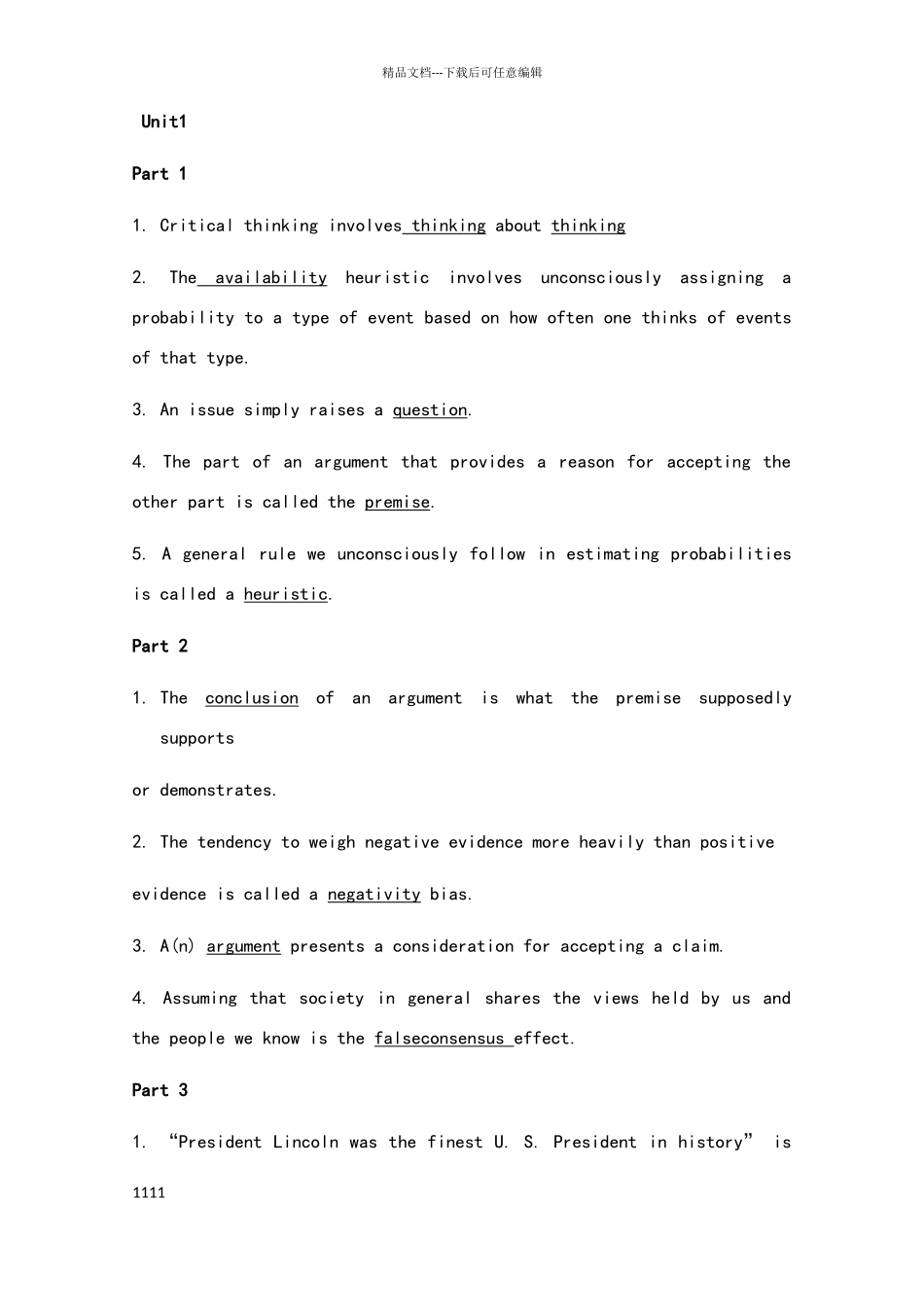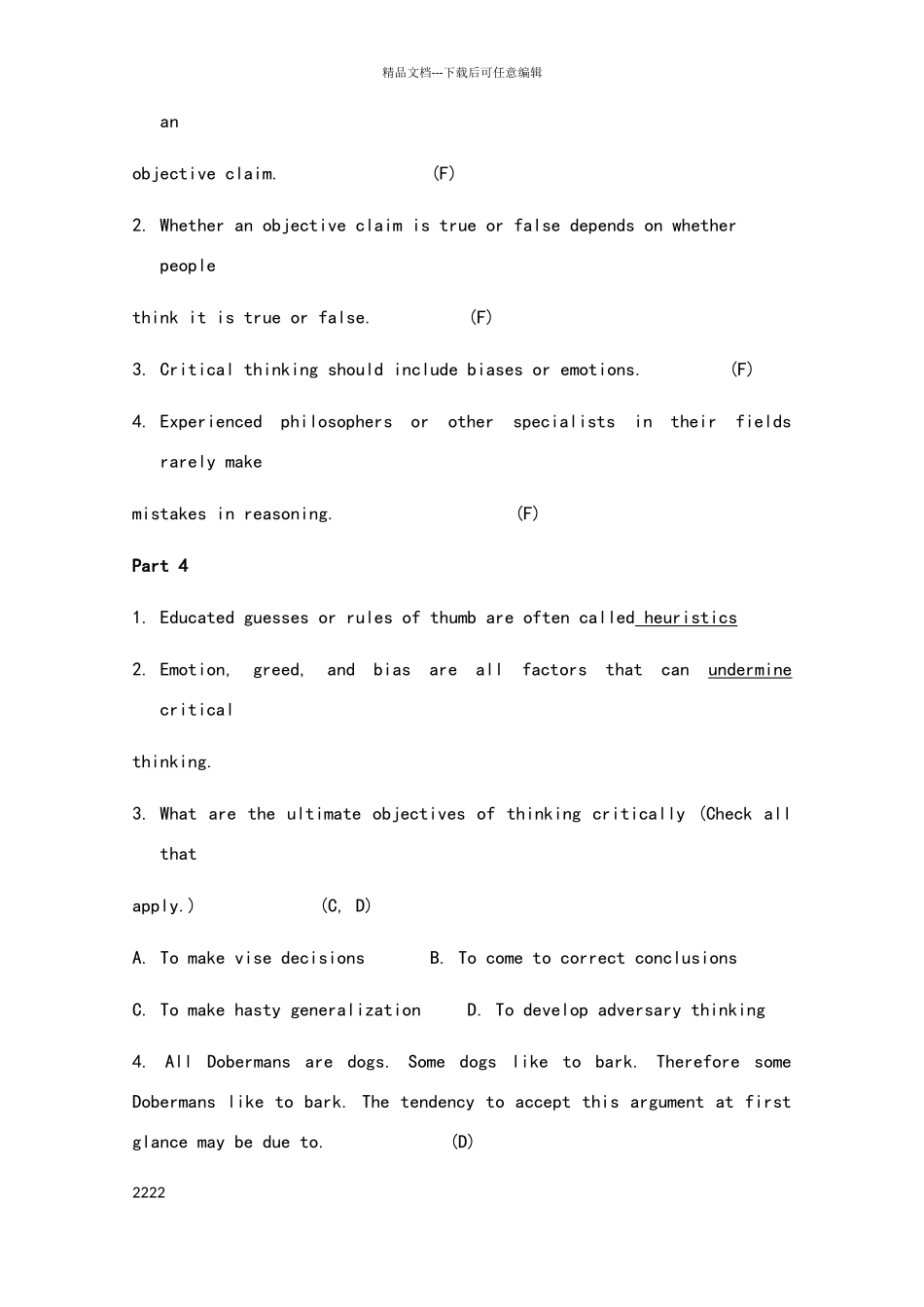精品文档---下载后可任意编辑 Unit1Part 11. Critical thinking involves thinking about thinking2. The availability heuristic involves unconsciously assigning a probability to a type of event based on how often one thinks of events of that type. 3. An issue simply raises a question.4. The part of an argument that provides a reason for accepting the other part is called the premise. 5. A general rule we unconsciously follow in estimating probabilities is called a heuristic.Part 21. The conclusion of an argument is what the premise supposedly supports or demonstrates. 2. The tendency to weigh negative evidence more heavily than positive evidence is called a negativity bias. 3. A(n) argument presents a consideration for accepting a claim. 4. Assuming that society in general shares the views held by us and the people we know is the falseconsensus effect.Part 31. “President Lincoln was the finest U. S. President in history” is 1111精品文档---下载后可任意编辑an objective claim. (F)2. Whether an objective claim is true or false depends on whether people think it is true or false. (F)3. Critical thinking should include biases or emotions. (F) 4. Experienced philosophers or other specialists in their fields rarely make mistakes in reasoning. (F)Part 41. Educated guesses or rules of thumb are often called heuristics2. Emotion, greed, and bias are all factors that can undermine critical thinking. 3. What are the ultimate objectives of thinking critically (Check all that apply.) (C, D)A. To make vise decisions B. To come to correct conclusions C. To make hasty generalization D. To develop adversary thinking 4. All Dobermans are dogs. Some dogs like to bark. Therefore some Dobermans like to bark. The tendency to a...


